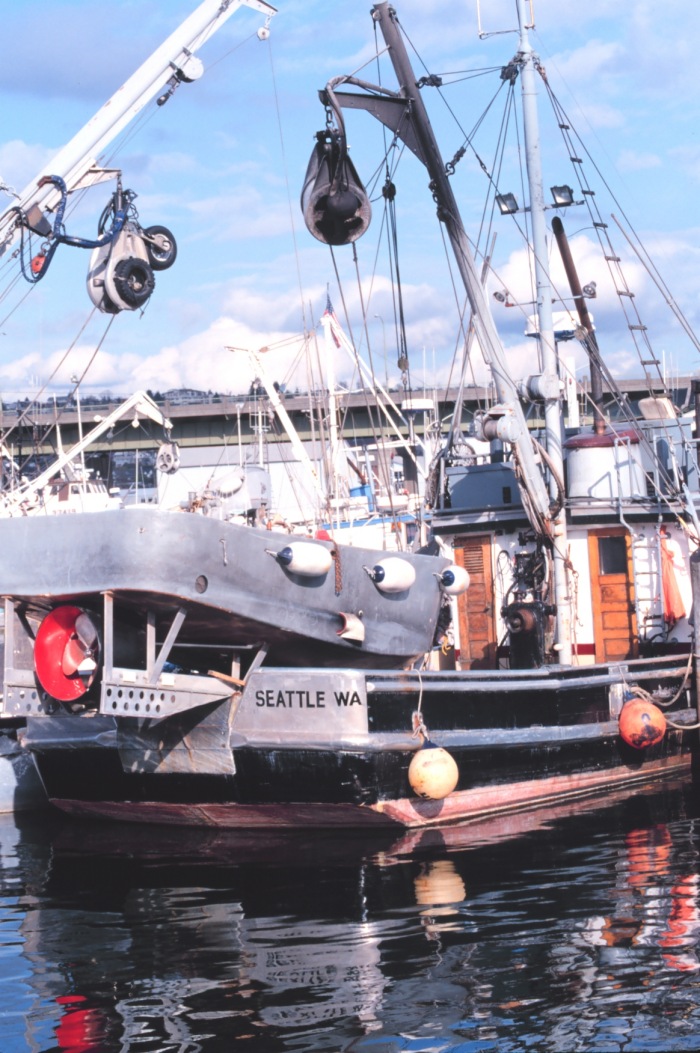Major ports in Puget Sound: fact sheet
The following fact sheet represents economic and environmental activities of major ports in the Puget Sound region. This is a living document and may be updated as new information becomes available.

Seattle
The port of Seattle was established in 1911 and is one of the nation's ten busiest seaports, with imports and exports totaling over $43 billion in 2011. It operates Sea-Tac airport as well as cruise ship terminals at Smith Cove and Pier 66.
Stats:
- 4th among U.S. ports in total dollar value of foreign trade in 2011, and 12th in total vessel trade (foreign and domestic) (source)
- Imports and exports totaled over $43 billion in 2011. (source)
- Top export in 2011 was grain, seed and fruit (source)
- Top import was machinery (source)
- Port generates nearly 200,000 jobs (source)
- At-berth clean fuels (ABC fuels) program encourages use of low-sulfur fuels in the port and provides incentives. Partnered with Puget Sound Clean Air Agency. (source) Also partners with EPA, Washington DEC, and Environment Canada.
- Port must comply with the National Environmental Policy Act, and works with the Federal Aviation Administration and EPA in order to do so. Information on the NEPA process is found at the Council of Environmental Quality. (source)
- Stormwater program monitored by Department of Ecology and City of Seattle (source)
Tacoma
The Port of Tacoma was created in 1918 on Commencement Bay, in South Puget Sound. The port is often known as the "Gateway to Alaska".
Stats:
- International and domestic trade totaled over $49 billion in 2012 (source)
- Top export commodity was oils, seeds and grains, top import was industrial machinery. (source)
- Port-related jobs generate $637 million in annual wages in Pierce County, and over 113,000 jobs in WA. (source)
- Participates in Northwest Ports Clean Air Strategy (PDF) to reduce air emissions
- Stormwater management plan based on DEC requirements, collaborates with the City of Tacoma to respond to oil spills, sponsors program through City for a Healthy Bay. (source)
Anacortes
The Port of Anacortes was established in 1931, and in 1968, the port built the Anacortes Airport. The city of Anacortes is a major gateway for tourists traveling to the San Juan Islands and Canada.
- The 2013 budget projects $13.5 million in operating revenue and $12.3 million in operating expenses.(source)
- The shipping export terminal expects $1.3 million in net income in 2013.(source)
- "Focus Fidalgo" environmental program targets port properties for environmental remediation. The port works in partnership with GeoEngineers, and won an award from the Western Dredging Association in 2012 in recognition of the program's accomplishments.(source)
- Intensive stormwater management program includes monitoring construction runoff, detecting and eliminating illicit discharge, and public education and outreach.(source)
Port Angeles
Established in 1923, the Port of Port Angeles manages marine facilities, marinas, airports, and industrial properties. It is located on a natural harbor in Clallam County.
Stats:
- A 2010 report shows the operations at the port's industrial properties, combined with the marine terminals, impacting a total of 1,356 jobs and generating $148 million in revenue. (source)
- In 2011, the marine terminals saw an increase in traffic, with 78.9 million board feet of logs passing through as opposed to 25.7 million board feet in 2010. (source)
- The port is involved in site cleanup of a former fuel storage facility area and remediation of a site that previously housed a plywood mill, with oversight from the Department of Ecology (source)
- The port has also partnered with users of Port Angeles Harbor to remove pollutants from the harbor and conduct further monitoring of the area.
Skagit
The Port of Skagit owns and operates the La Conner Marina, the Bayview Business Park, and the Skagit Regional Airport. Created in 1964, the port has expanded from supporting local natural resource activities such as agriculture, wood products, and fisheries to facilitating trade and tourism as well as economic development projects.
Stats:
- The Port of Skagit’s 80 tenants employ more than 1,000 people with an estimated annual payroll of $40 million.(source)
- The 2012 operating budget foresees operating revenues of $4.7 million and expenses at $4.3 million. The 2012 capital budget is $13.4 million.(source)
- For 2012, the Port will collect $1.8 million in property taxes, with an estimated millage rate of 20 cents per $1,000 of assessed valuation.(source)
- La Conner marina earned a Clean Marina Program Certification in 2009, recognizing their implementation of Best Management Practices.(source)
- The Port of Skagit Wetlands Program began in the 1990s and has protected 477 acres of wetlands at the Bayview Business Park.(source)
- Stormwater management program including public education, runoff control, and pollution prevention.(source)
- Board of Commissioners approved a Resource Conservation Plan in January 2010, concentrating on lighting, heating, water use, and waste and recycling.(source)
Everett
The Port of Everett was created in 1918, and now operates the largest public marina on the West Coast.
Stats:
- The Port of Everett generated 31,080 jobs directly in 2008, and 11,000 related aerospace jobs.(source)
- The Port revenue for 2008 was $3.6 billion.(source)
- Local purchases totaled $600 million in 2008.(source)
- One of only two ports in the state to have an Environmental Management System (EMS), sponsored by the EPA and the American Association of Port Authorities.(source)
- Works with the Puget Sound Clean Air Agency to reduce emissions.(source)
- Dust reduction policy means a water truck is available at all times to spray down excess dust from construction and other activities.(source)
- Purchase environmentally friendly equipment to replace older vehicles, committed to using clean energy fuel sources.(source)
- Spill response trailer at shipping terminals and marina, funded by a grant from the Department of Ecology.(source)

